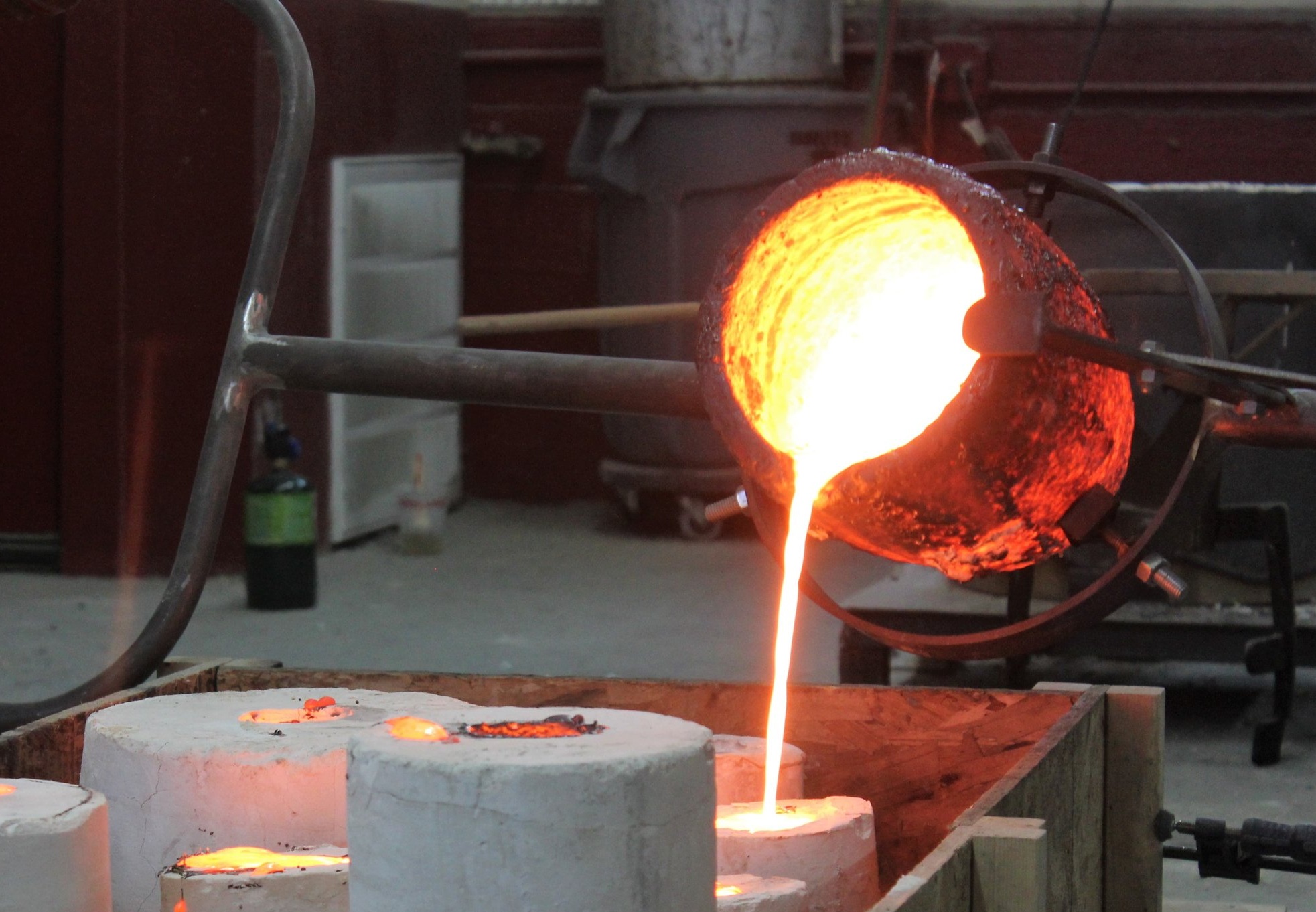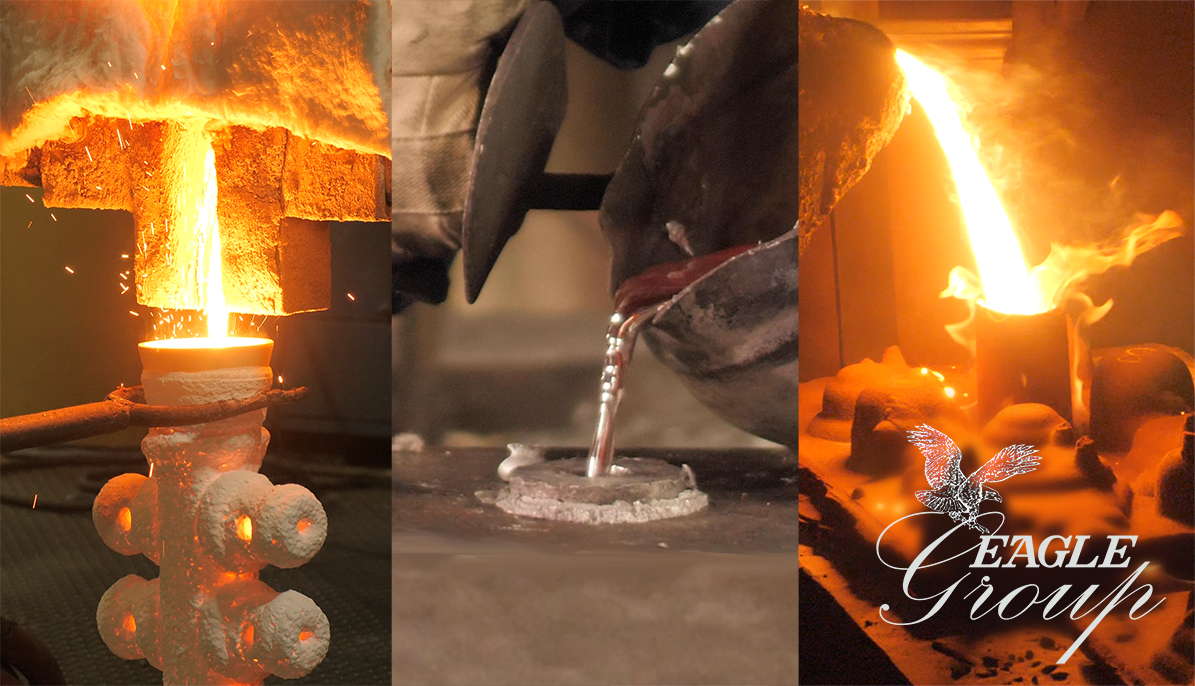A Deep Study the Different Sorts Of Metal Casting and Their Uses
Metal Casting encompasses numerous strategies, each customized for specific applications and demands. From the affordable sand casting method to the precision of financial investment spreading, each process has distinct benefits. Die casting sticks out in high-volume production situations, while shed foam casting introduces ingenious style possibilities. Furthermore, irreversible mold spreading is identified for its sturdiness. Recognizing these methods opens a home window into their useful uses and effects in numerous markets. What lies beneath the surface of these casting methods?
Sand Spreading: A Flexible and Affordable Method
Although numerous casting techniques exist, sand casting stays one of the most functional and cost-efficient techniques in the metalworking industry. This method uses a combination of sand and a binding representative to create molds, permitting the production of components in diverse shapes and sizes. Sand spreading is particularly helpful for little to medium production runs, as it needs minimal ahead of time financial investment in tooling contrasted to various other casting methods.
The procedure starts with the development of a mold, where liquified metal is gathered to form the desired things once cooled down. Its flexibility enables making use of numerous steels, consisting of light weight aluminum, steel, and iron. Additionally, sand spreading can suit intricate geometries, making it appropriate for a variety of applications, from automotive parts to detailed imaginative pieces. Overall, sand casting's performance and versatility strengthen its importance in the production landscape.
Financial Investment Casting: Precision and Information for Intricate Forms
Financial investment spreading sticks out as an approach renowned for its capability to create extremely described and detailed components. This procedure involves producing a wax pattern that is covered with a ceramic shell, which is then heated up to remove the wax and set the shell. The outcome is a specific mold and mildew that can capture complicated geometrical forms with impressive accuracy.
This spreading strategy is particularly advantageous for generating parts with slim walls, great attributes, and limited resistances, making it ideal for markets such as aerospace, automotive, and clinical gadgets. Investment spreading fits a selection of steels, including stainless-steel, light weight aluminum, and titanium, allowing manufacturers to meet particular product requirements.
Furthermore, the process lessens machining needs post-casting, which can improve efficiency and minimize manufacturing costs. Overall, investment casting is a preferred option for applications where precision and information are vital.
Die Casting: High-Volume Manufacturing With Excellent Surface Area Complete

Die spreading is a highly efficient production procedure that masters generating big quantities of metal get rid of phenomenal surface finishes. This technique entails compeling liquified metal right into a mold cavity under high pressure, enabling rapid manufacturing cycles and uniformity in the ended up products. Typically utilized materials include magnesium, zinc, and aluminum, which provide excellent mechanical residential properties and deterioration resistance.
Die spreading is especially advantageous for industries such as vehicle, electronics, and consumer items, where precision and quality are paramount. The process makes it possible for intricate layouts, lowering the need for additional machining and ending up processes. Additionally, the smooth surface areas created via die casting usually need marginal post-processing, resulting in reduced overall production prices. As a high-volume production strategy, die index casting is perfect for makers seeking performance without jeopardizing on high quality, making it a recommended selection for numerous applications throughout various industries.
Lost Foam Casting: Cutting-edge Technique for Intricate Layouts
Lost foam spreading reinvents the manufacturing of intricate steel components by making use of an one-of-a-kind process that removes the demand for conventional molds. Rather than conventional mold-making, this approach uses a foam pattern that is coated with a refractory product. When the pattern is established, molten metal is put directly into the mold, creating the foam to leave and evaporate behind an accurate tooth cavity for the metal to fill up. This cutting-edge technique allows for intricate styles and comprehensive functions that might be testing to attain with various other casting methods.
In addition, shed foam spreading can reduce waste and energy consumption, making it an environmentally friendly option. Industries such as automotive and aerospace advantage substantially from this method, as it sustains the creation of lightweight parts with intricate geometries. On the whole, shed foam spreading stands apart for its capability to deliver top quality, customized steel components effectively.
Long-term Mold Casting: Toughness and Uniformity in Steel Parts
Irreversible mold spreading is a highly effective method for generating constant and durable metal components, leveraging reusable molds that are typically made from metals such as iron or steel. This spreading procedure entails pouring molten steel right into these mold read more and mildews, which are preheated to improve product top quality and decrease flaws. Using multiple-use mold and mildews not just lessens waste but likewise enables greater manufacturing rates, making it economically advantageous for manufacturers.
The resulting components exhibit outstanding dimensional accuracy and surface finish, making them ideal for applications in automotive, aerospace, and industrial equipment. In addition, irreversible mold and mildew spreading can fit a selection of alloys, better broadening its versatility. The sturdiness of the cast components is improved as a result of the regulated air conditioning prices that advertise better grain structures. Overall, this spreading strategy sticks out for its ability to generate high-quality metal parts that meet rigorous efficiency requirements, ensuring reliability sought after settings.
Regularly Asked Inquiries
What Materials Can Be Made Use Of in Different Metal Casting Processes?

Numerous products can be utilized in Metal Casting procedures, consisting of light weight aluminum, iron, bronze, and zinc. Each product provides distinct residential properties, affecting the casting method's performance, stamina, and viability for different applications in production.
Exactly How Do Casting Techniques Impact the Mechanical Properties of Metals?
Casting methods significantly affect the mechanical properties of steels, influencing factors like solidity, ductility, and strength. Variations in cooling prices and mold and mildew materials can bring about various microstructures, inevitably affecting the performance of the end product.
What Are the Ecological Influences of Steel Casting Processes?
Metal Casting processes can cause air and water contamination, resource depletion, and substantial power intake (Wisconsin Aluminum Foundry). In addition, the generation of waste materials and greenhouse gas exhausts significantly contributes and impacts the atmosphere to environment adjustment
How Do You Pick the Right Spreading Technique for a Job?
Selecting the appropriate spreading approach entails reviewing project needs, product residential properties, intricacy, and manufacturing quantity. Factors like expense efficiency, finish high quality, and preparation also play vital roles in determining the most ideal approach.
What Safety Preventative Measures Should Be Taken Throughout Metal Casting Workflow?
Throughout Metal Casting procedures, security precautions include wearing protective equipment, guaranteeing correct air flow, carrying out devices assessments, maintaining a clean workspace, and having emergency methods in position to manage possible dangers like burns or harmful fumes.
From the cost-effective sand casting method to the accuracy of financial investment spreading, each procedure has one-of-a-kind benefits. Die casting is a very efficient manufacturing procedure that stands out in producing large quantities of steel parts with anonymous phenomenal surface finishes. Lost foam spreading changes the manufacturing of complex steel components by utilizing an one-of-a-kind process that eliminates the demand for conventional molds (Wisconsin Aluminum Foundry). Long-term mold spreading is an extremely efficient approach for generating durable and constant steel components, leveraging multiple-use mold and mildews that are generally made from metals such as iron or steel. Various materials can be utilized in Metal Casting procedures, including aluminum, bronze, zinc, and iron